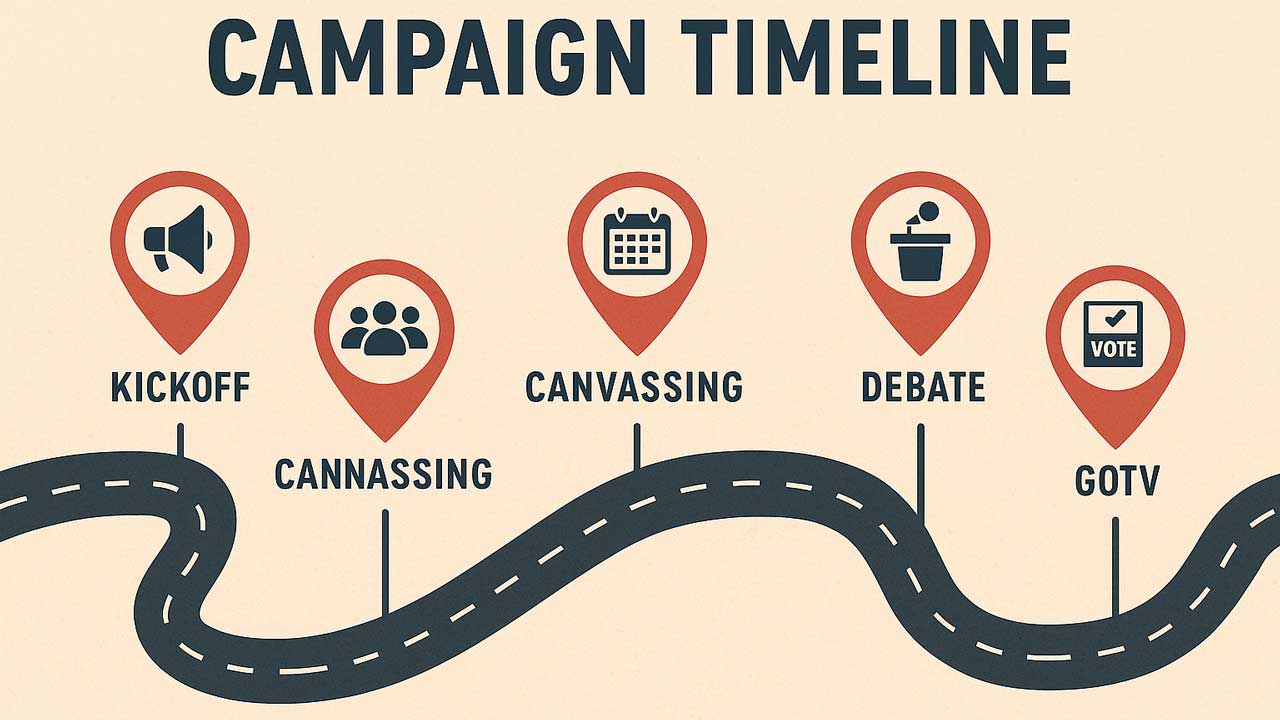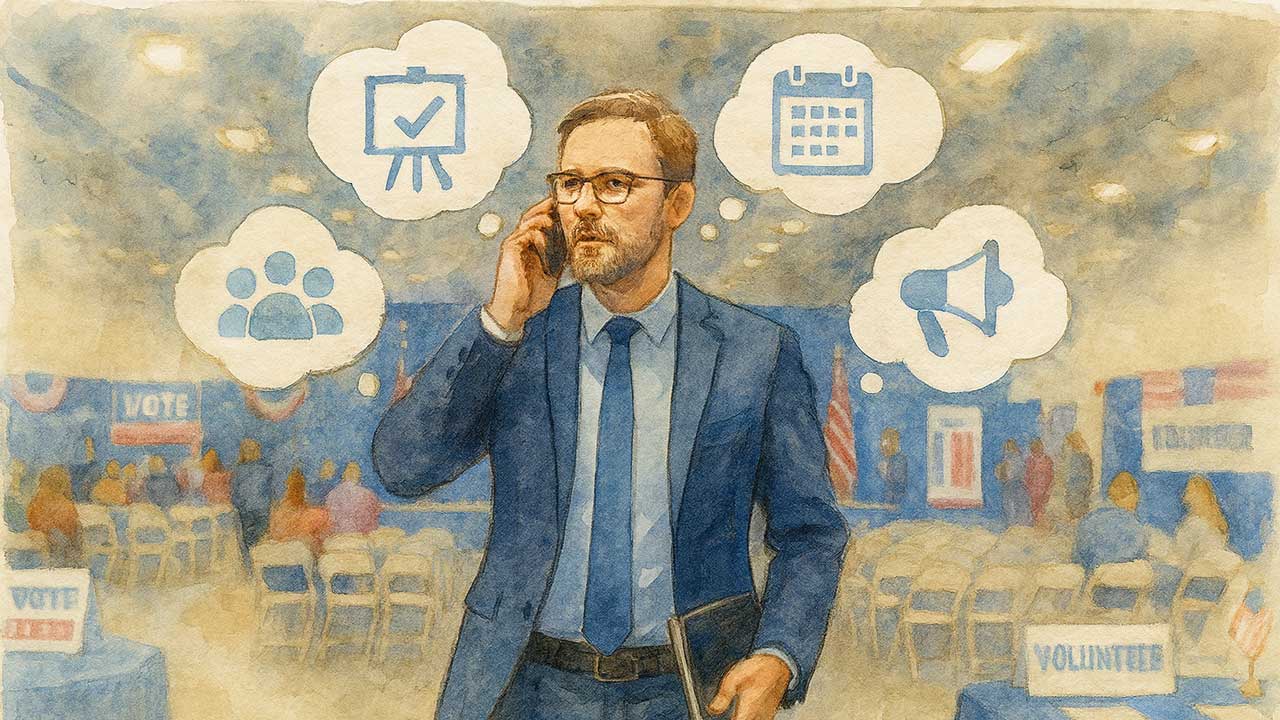Build a Winning Campaign by Owning the Event Circuit
Many first-time candidates assume that a polished résumé, sharp talking points, and a sleek website are enough to win an election. The reality is far different. Campaigns are not decided by image alone but by consistent grassroots presence. The candidates who succeed are the ones who keep showing up in person where voters, activists, and community leaders gather. Attending events is not a helpful extra, it is the prerequisite for anyone serious about running for office.
Why Events Hold the Key to Election Success
Face-to-face exposure is unmatched in politics. Each handshake and introduction plants a seed of recognition that digital ads cannot replace. Just as important, steady attendance signals legitimacy to party leaders and grassroots activists who want to see a candidate’s commitment firsthand. Beyond visibility and credibility, events are fertile ground for building the lifeblood of any campaign: votes, volunteers, and donors.
Setting the Standard: Multiple Events Each Week
A strong campaign calendar is built on a rhythm of activity. Candidates should aim to attend at least two or three events each week leading up to early voting. That consistency builds momentum and ensures the candidate remains top-of-mind. The months before ballots are cast are particularly important, making every gathering an opportunity to solidify support before votes are locked in.
Choosing the Right Events to Prioritize
Not all events deliver equal value, and campaigns must learn to prioritize. Political meetings should come first. County GOP meetings, Young Republicans, College Republicans, and local women’s clubs often serve as the gatekeepers of the conservative ecosystem. These organizations not only influence voters directly but also connect candidates to other groups worth engaging.
Other candidate events also matter. Attending rallies and fundraisers for aligned candidates is a way to show solidarity, learn different campaign styles, and tap into overlapping networks of supporters. Civic groups and festivals, while highly visible, can be hit or miss. A booth at a fair may provide exposure, but often the return is lower than a targeted political meeting. Whenever there is doubt, a campaign manager should weigh whether that time would be better spent calling donors or helping volunteers organize a fundraiser.
Knowing What to Avoid
There is a temptation to say yes to everything, but smart campaigns are selective. Candidates should decline invitations to events that conflict with their core values. Voters respect integrity, and nothing damages credibility faster than pandering. Overcommitting is another danger. A week overloaded with low-value events can leave little time for canvassing, fundraising, or media outreach—all of which are essential for viability.
How Campaigns Must Maximize Every Event
Showing up is only the beginning. Effective candidates enter each event with a clear goal. Some gatherings are better suited for meeting donors, while others are prime recruiting grounds for volunteers. The key is to be intentional. Once in the room, candidates should actively introduce themselves to leaders and influencers while listening closely to what attendees care about. Asking to be added as a guest speaker for future meetings is another way to turn one appearance into ongoing exposure. Follow-up is just as critical. Contacts gathered at events must be logged and integrated into the campaign system quickly so that a handshake turns into a long-term supporter.
The Compounding Power of Consistent Attendance
The real magic of event attendance lies in its compounding effect. When voters and activists see a candidate consistently, trust deepens. Name recognition grows, not because of advertising saturation, but because of authentic presence. Word-of-mouth spreads as attendees tell others that this candidate is everywhere, signaling seriousness and viability. The payoff goes beyond a single election cycle. Candidates who build this discipline create durable campaign infrastructure that will serve them through both primary and general elections—and even future races.
Showing Up is the Foundation of Election Victory
Running for office begins with the simple act of showing up. Every appearance builds credibility, strengthens networks, and positions the candidate as a contender. Candidates who regularly attend events reinforce the impression that they are committed to their run for office, which in turn attracts more volunteers and donations.
Attendance is not just another tactic to check off a list. It is the foundation on which electoral success is built, and the candidates who understand this principle are the ones who cross the finish line with the strongest support.



